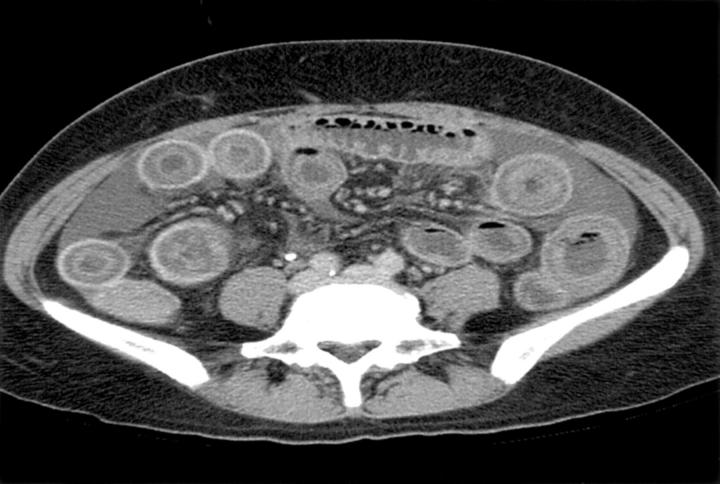Abstract
Methods: A retrospective study was carried out for all patients admitted with SLE from 1993 to March 2001. The SLEDAI and laboratory data were collected at the time of diagnosis of SLE and at the time of acute abdominal pain. Lupus enteritis (gastrointestinal vasculitis) was diagnosed by clinical investigation and abdominal computed tomographic findings.
Results: Chart review identified 175 patients (20 male, 155 female) who had been admitted with SLE. Of these patients, 38 (22%) presented with acute abdominal pain. Lupus enteritis was the most common cause of acute abdominal pain. Patients were divided into three groups: group 1: lupus enteritis (n=17), group 2: acute abdominal pain without lupus enteritis (n=21), and group 3: SLE without acute abdominal pain (n=137). There was no difference in age and sex among the three groups. Antiphospholipid, anti-RNP, anti-Sm, anti-Ro, and anti-La antibodies did not differ among the three groups. There was no difference in the SLEDAI at the time of diagnosis and at the time of acute abdominal pain between groups 1 and 2. Complement, erythrocyte sedimentation rate, C reactive protein, and anti-dsDNA measured at the time of acute abdominal pain did not differ between groups 1 and 2. A drop in the white blood cell count at the time of abdominal pain was more prominent in group 1 than group 2. In lupus enteritis, the jejunum and ileum were the sites most commonly affected. Rectal involvement was rare. Even though four patients relapsed, all the patients with lupus enteritis, including those who relapsed, responded well to corticosteroid.
Conclusion: Lupus enteritis is the most common cause of acute abdominal pain in SLE. All patients with lupus enteritis responded well to a high dose of a corticosteroid without surgical intervention. The SLEDAI and laboratory data, except leucopenia, do not correlate with the occurrence of lupus enteritis.
Full Text
The Full Text of this article is available as a PDF (89.4 KB).
Figure 1 .
Abdominal CT scan showing circumferential wall thickening and target sign in small and large bowels. Mesenteric change is also noted with engorged mesenteric vessels and haziness.



